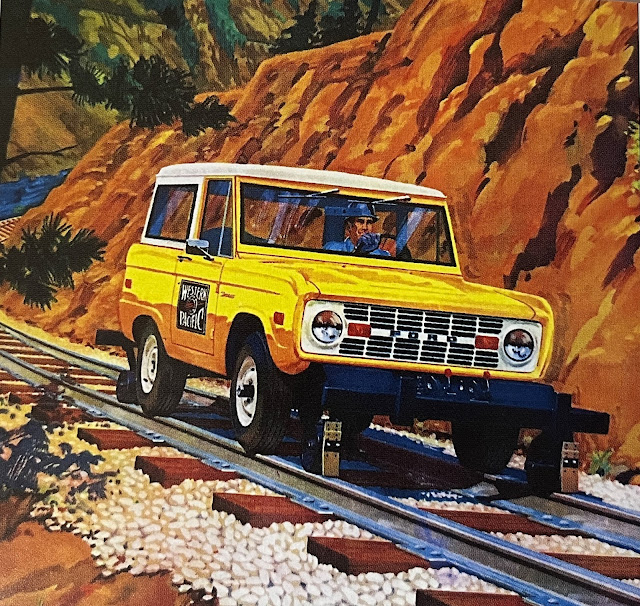Cryptozoology is the study of mythical creatures that may or may not exist.
This applies to Broncos how? Well, there is a lot of mystery and myths surrounding certain Bronco models and specialty-built Broncos.
So, this new segment at the blog will focus on these prototypes, one of a kind, special editions and the most historical Broncos ever built.
To keep the posts short, we will include only a brief story of each
We will try to separate fact from fiction and possibly come up with more questions than answers.
At first, I was going to compile this into one post, but it got waaay too long.
It is a little-known fact that the classic Ford Bronco has a track width of 57.5" (measured from the center of each tire).
It just so happens that the standard track width of railroad tracks in North America are 56-59", which means the Bronco can easily drive on the railroad tracks without special wheels.
This was not a coincidence. There were few vehicles at that time that had that exact track width. Also, many 4WD trucks had front axles that were slightly wider than the rears, while the Broncos axles are identical in width.
Ford knew there was a market for this and built Broncos knowing the railroad companies would jump in line to buy the new Ford.
Another tie into the railroads is the Budd Company, who originally built the Bronco bodies, also built rail cars, so their assembly line was set up for vehicles of that exact track width.
Below is a rendering from Ford's Marketing Team, photo courtesy of Todd Zuercher's book A History of Ford's Legendary 4x4 Ford Bronco





No comments:
Post a Comment